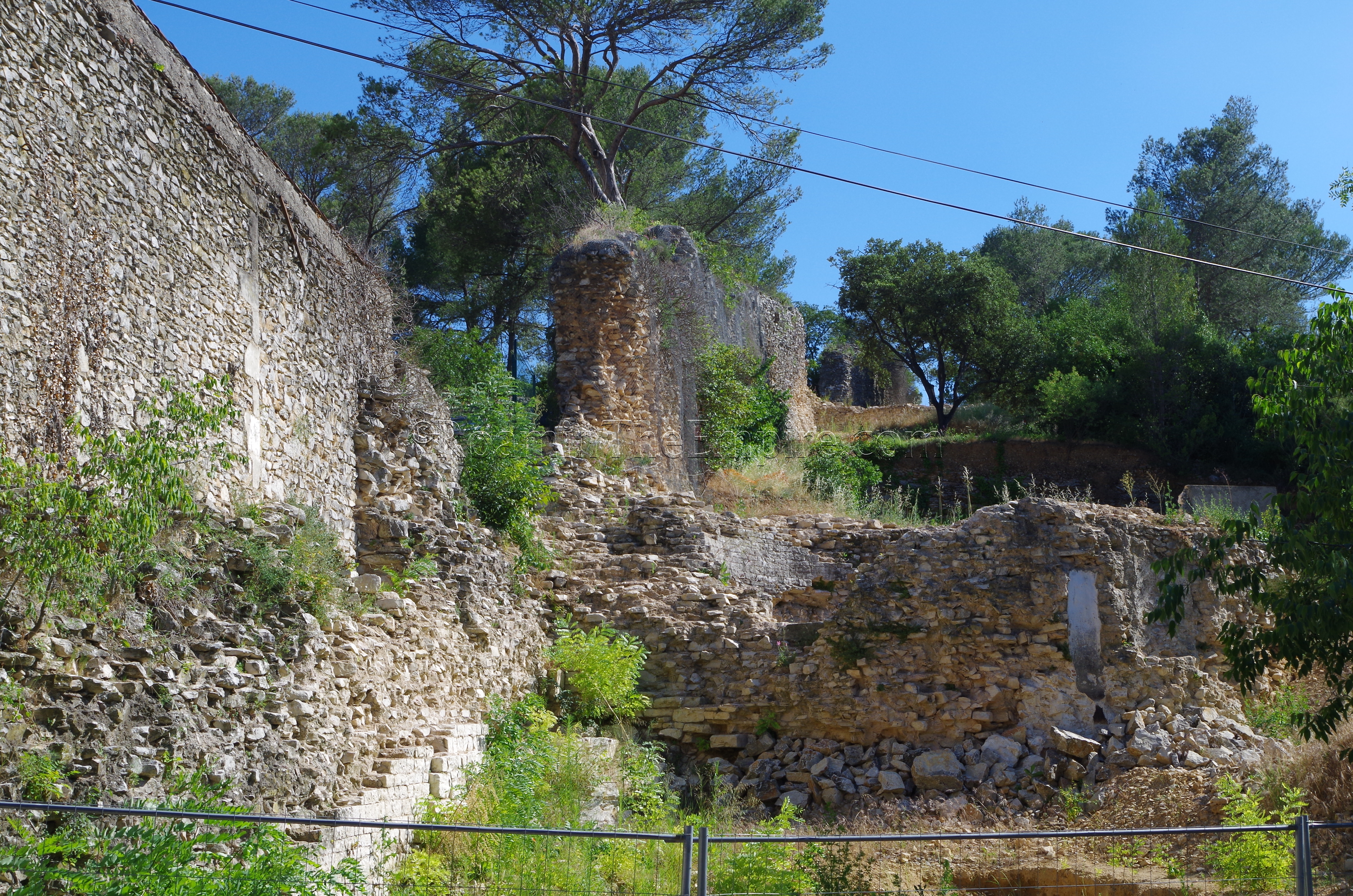
Continued From Nemausus Part I
About 800 meters to the west (as the crow flies; it’s nearly a kilometer following streets) of the Porte de France, there is a small section of the Nemausus city wall that is heavily conserved and probably largely of later construction at the intersection of Avenue Kennedy and Rue Armand Barbès. It does, however, follow the reconstructed route of the Roman fortifications, and at the very least, this section of wall is built on those walls.
There are a few points in the northwest part of the city at which some sections of the city walls are visible. Though not accessible, part of a large section running south from the D999 is visible. It’s hard to see from the vantage point off the D999, but there is a pretty significant section of the walls and two large towers that runs up the hill to the south. There is also a very small section preserved near the intersection of Chemin des Carrières and Route d’Alès. These remains of the city walls seem to date from the post-Augustan improvements to the walls.
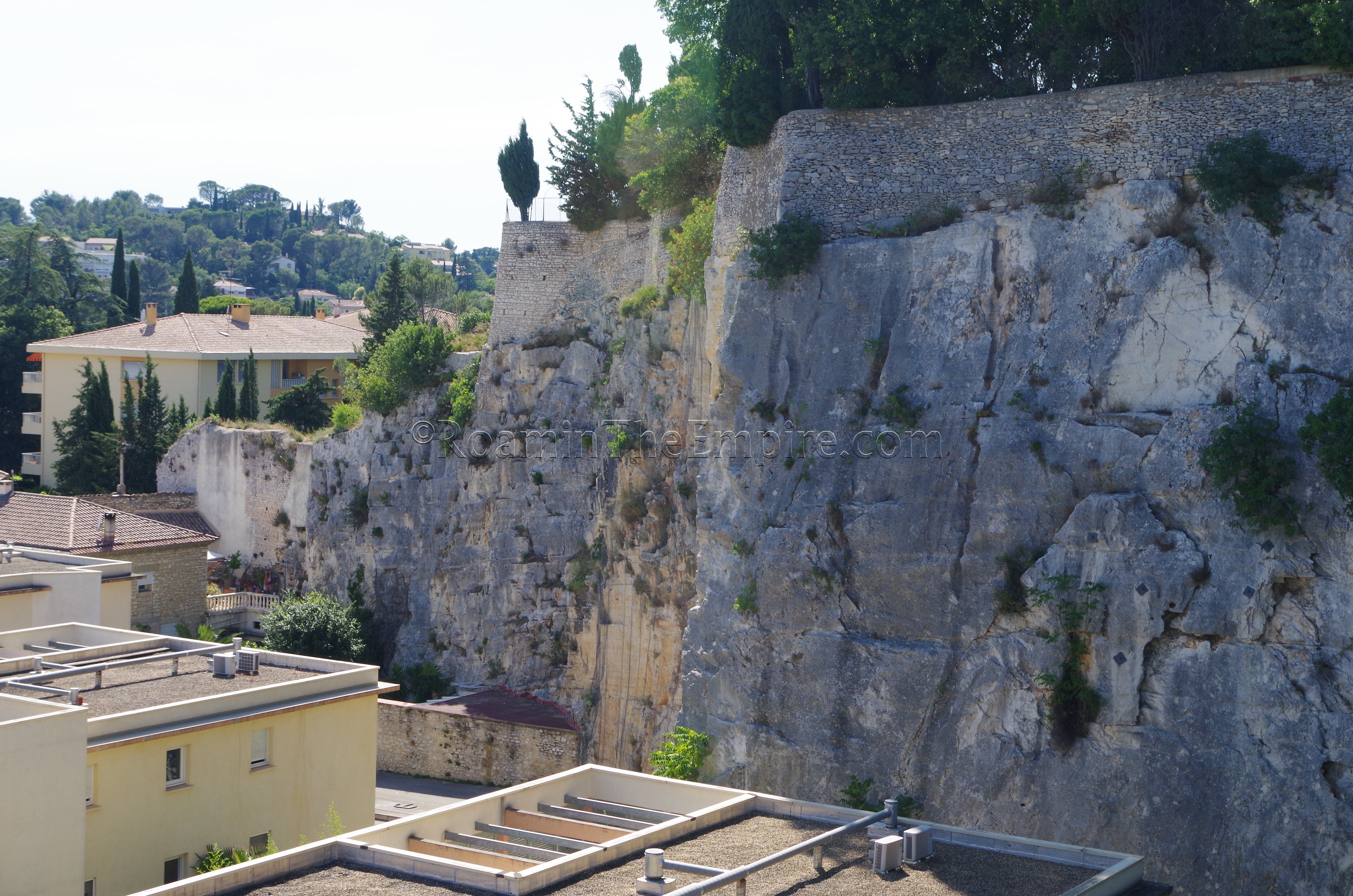
Between these last visible and accessible vestiges of the city walls before climbing up to the Tour Magne is the Rocher de Canteduc quarry. The quarry itself is inaccessible, as both the top and bottom of the quarry are enclosed by private property. There is, however, a viewpoint along Rue de Combret at which the quarrying activity on the steep cliffs are visible. This quarry seems to have been used in construction of the city walls, which used over 60,000 cubic meters of stone, and then largely abandoned. The ramparts also ran along the top of this rise, but, again are inaccessible and located on private land.
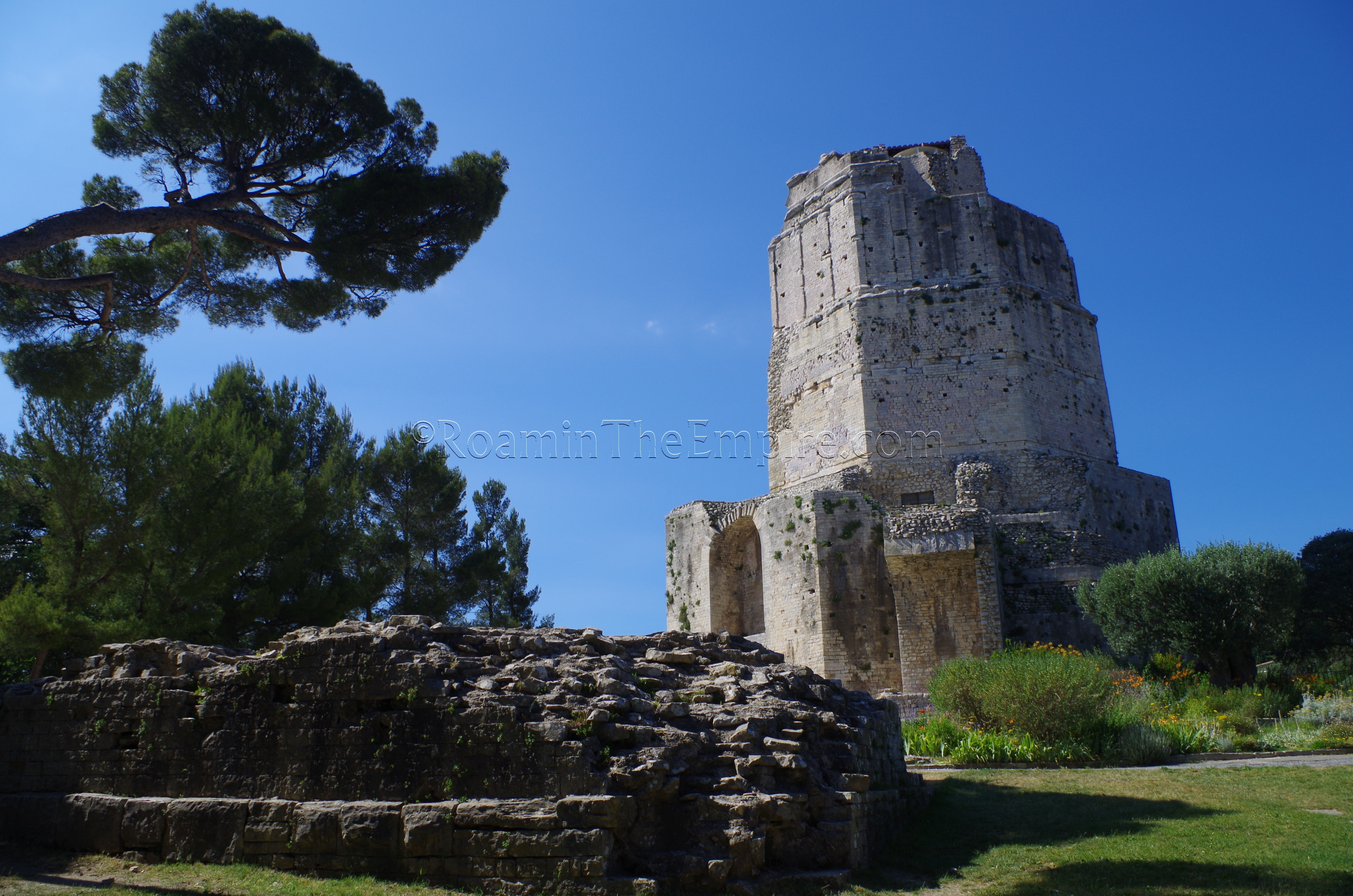
Tour Magne
The biggest feature of the Nemausus wall circuit is the Tour Magne, perched on a hill at the northern extent of the walls. Like the amphitheater, the Tour Magne has a complicated schedule of seasonal opening times, so it’s probably easiest just to link to the webpage from here. Admission to the tower is 3.5 Euros, but, it is also included as part of several combination tickets for the other monuments in Nîmes (and in the area) discussed above in admission to the amphitheater.
The Tour Magne sits atop Mont Cavalier, the highest point in Nîmes, giving it a commanding view of the area for kilometers in every direction. The first 18 meters of the interior of the tower are actually part of a Gallic tower that was constructed here prior to the arrival of the Romans; probably in the 3rd century BCE. When the fortifications for Nemausus were initially built during the reign of Augustus, the tower was incorporated into the walls. The original tower was encased in the Augustan tower and the height was probably at least doubled, though only 33 meters of it remains today. The tower is claimed to be the only remains of the Augustan fortifications, though the two city gates remaining also date to the Augustan construction.
Admission to the Tour Magne includes being able to climb up to the top of the tower via a modern staircase. Not much remains of the ancient interior of the tower, though the Celtic foundations can be seen. There’s some information posted inside the tower, but the main reason for entrance would probably be the spectacular views of the city afforded by climbing up. Even without interest in archaeology, the admission is worth that alone. There are some scattered remains around the tower as well, some of which seem to have been associated with a courtyard that was laid out on the interior side of the tower.
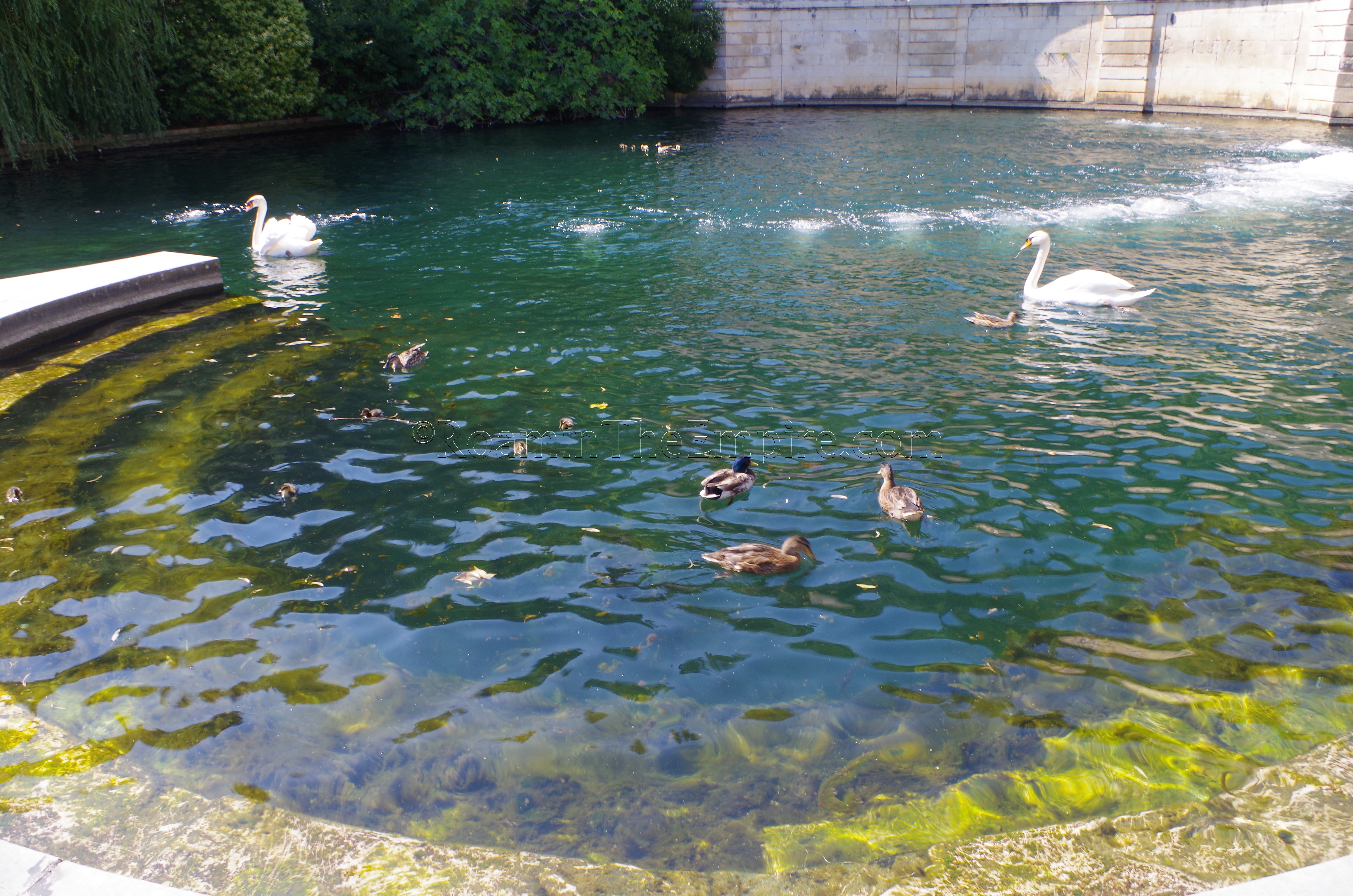
Les Jardins de Fontaine
Downhill for the tower, to the south, in the same park area, is the spring of Nemausus, which is located in Les Jardins de Fontaine. The gardens are free to access, but they do have opening hours. Like many of the other sites in Nîmes, the hours of access are rather complicated depending on the season (and can be found here), but it generally opens at 7:30 and closes between 18:30 and 24:00 depending on the time of year.
There was apparently significant Gallo-Romain remains associated with the sanctuary surrounding the spring as late as the 18th century, but much of those were covered up when Les Jardins de Fontaine park was built in the late 18th and early 19th century. Though much of what is here now is a modern construction, the architect of the park apparently used inspiration from the ancient structures in an attempt to recreate the sanctuary as it was believed to have existed in Roman times. The spring itself still flows today and supplies water to a modern canal that stretches to the east (though it was evidently one of the retained features of the Roman sanctuary). Dedications found at the spring indicate that it was not only used in conjunction with worship of Nemausus, which was linked to a healing cult, but also to the imperial cult and the health of the emperor.
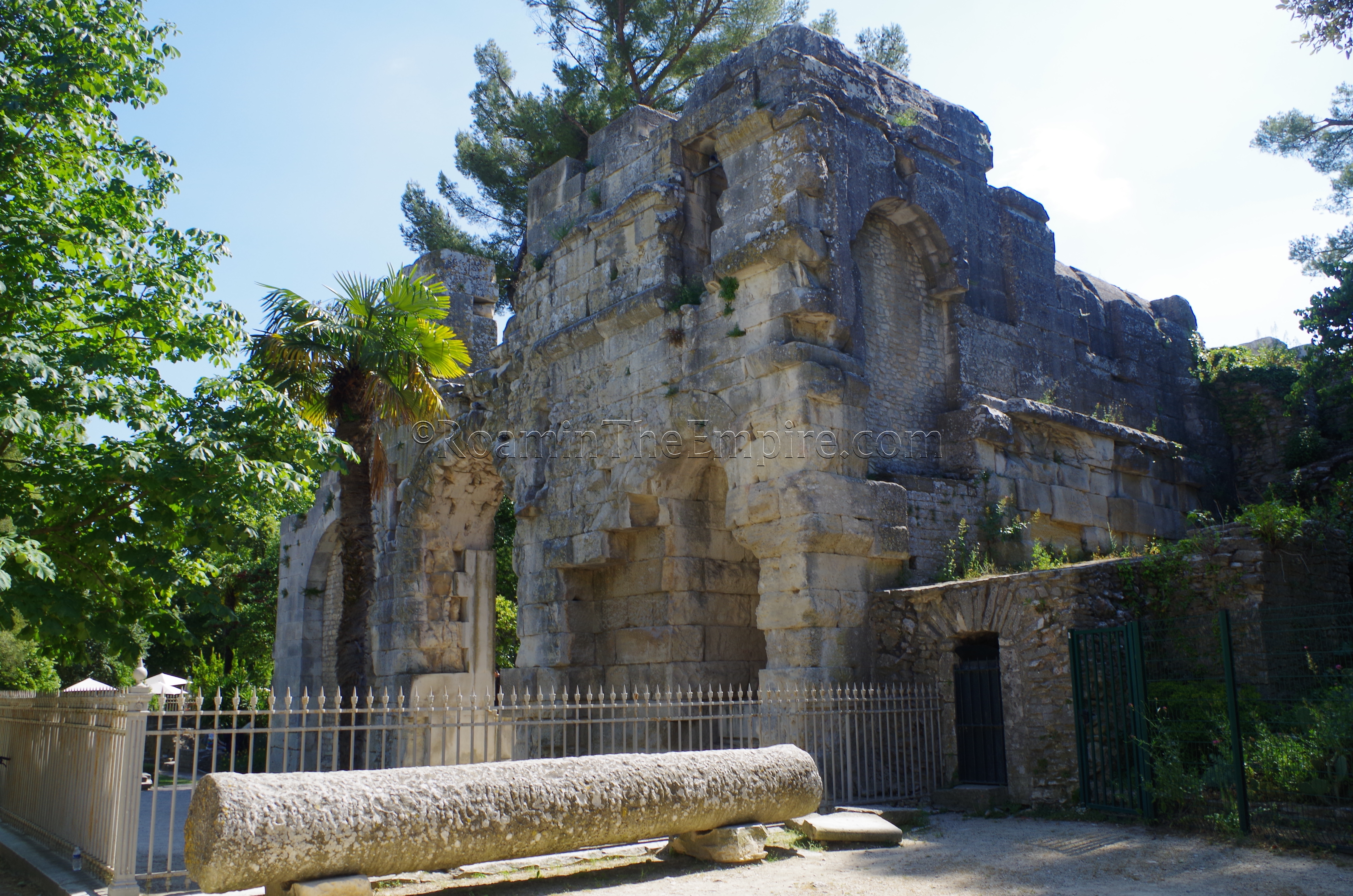
Adjacent to the spring, just to the southwest, is the so-called Temple of Diana. Once believed to be the temple that Hadrian had built for Plotina in Nemausus, it is now believed to have been a library. The structure was largely intact up to the 16th century, as the building was converted into use as a church. During the Wars of Religion, however, the church was severely damaged and reduced to the state it remains in today. The library seems to have originally been constructed under Augustus with significant works conducted on the building in the 2nd century CE.
Many interior decorative elements are pretty well preserved, and a great deal of the building is accessible. Out in front of the library, there are also the remains of the portico that surrounded the nymphaeum and sanctuary of Nemausus. Though there is a gate and fence surrounding the building, allowing for it to be inaccessible to the rest of the park, there do not seem to be any separate hours specifically, and it should be accessible whenever the lower gardens of Les Jardins de Fontaine are open.
About a 10 minute walk to the west of the Nemausus spring is the castellum aquae (also called the castellum divisiorum) of the Nemausus aqueduct. Located just outside the fortifications that now encompass the University of Nîmes, on the west side, the castellum aquae was the point at which the Nemausus aqueduct terminated in the city and where water was distributed. There is no entrance, but rather just a viewing area from the sidewalk in which the structure can be seen. Much of the original structure is missing, but the channel through which the aqueduct emptied, and the smaller channels through which the water would have been distributed can be seen. There is a small informational sign posted.
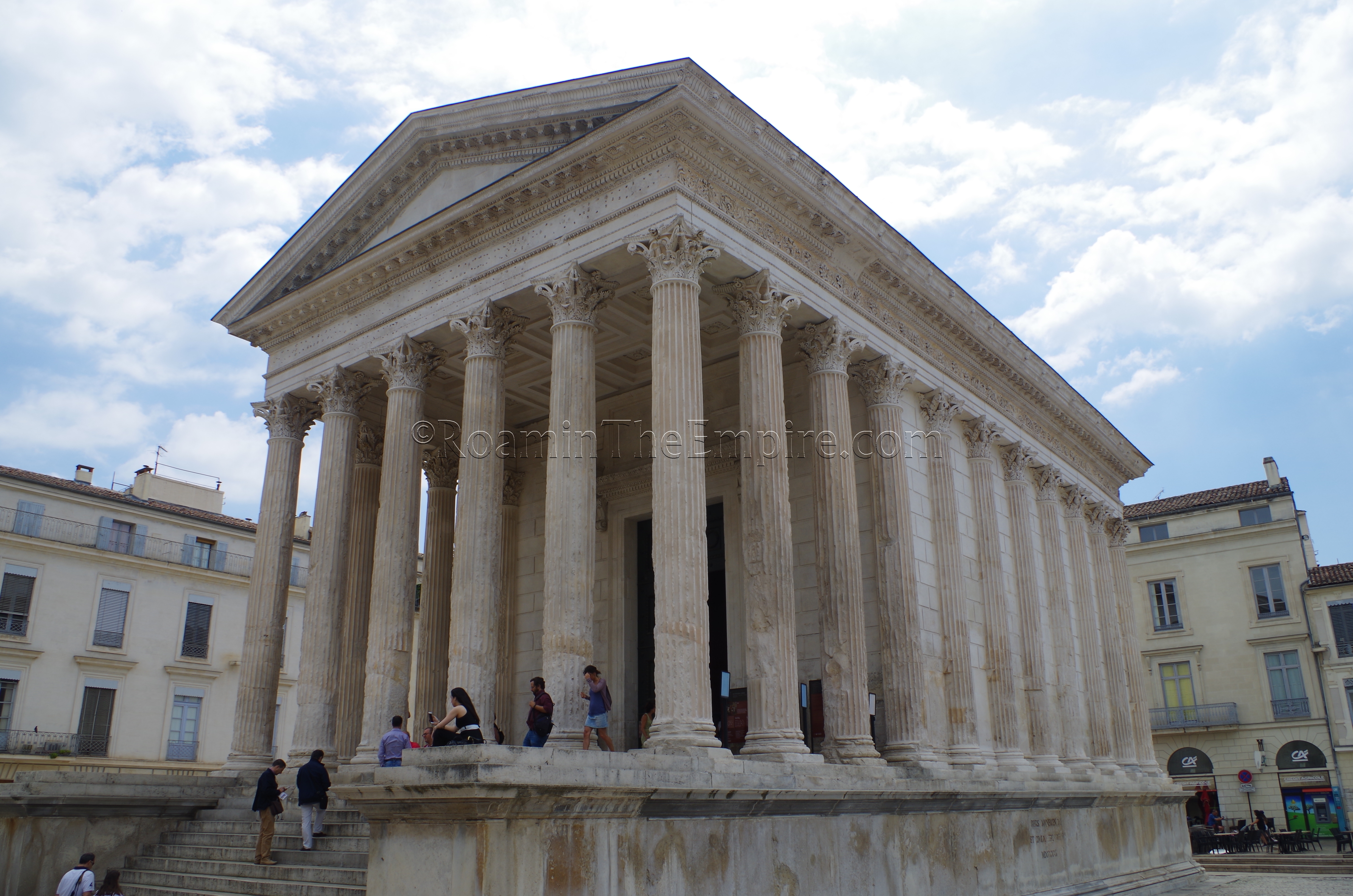
Maison Carrée
Back to the south is another one of the major Roman monuments of Nemausus, and perhaps one of the best known Roman buildings in all of southern France; the Maison Carrée temple. The Maison Carrée technically has opening hours (viewable here) but the interior of the temple is not really visible. Instead, the entirety of the interior is modern construction into a movie theater where a movie about the early history of Roman Nemausus is playing. It’s an interesting movie, but I probably would have preferred to see the interior of the temple, even though uses since antiquity have removed most of the ancient interior elements. Admission is 6 Euros, or it comes along with any of the previously discussed passes for the major monuments of Nîmes.
The Maison Carrée is considered to be one of the finest extant examples of a Roman temple in the whole of the Roman world. The exact date of construction is not exactly clear, probably the late 1st century BCE. Though the letters of the dedication on the architrave of the temple are missing, a reconstruction of the inscription in the 18th century deduced that it was dedicated to Gaius and Lucius Caesar. The phrase ‘princes of youth’ in the dedication indicates that it was after their deaths, and so the dedication of the temple was likely sometime shortly after the former’s death in 4 CE. Lucius had died two years before that in nearby Massalia. The temple has undergone numerous renovations and refurbishments over the years. The exterior was most recently restored, finishing in 2011, and removing much of the dirty and grime built up on the façade of the building. This temple was situated in what would have been the forum. There’s a couple of lowered areas in front of the temple that illustrate where the ground level would have been, a couple meters below the present level, and some elements of the portico that would have surrounded the temple.
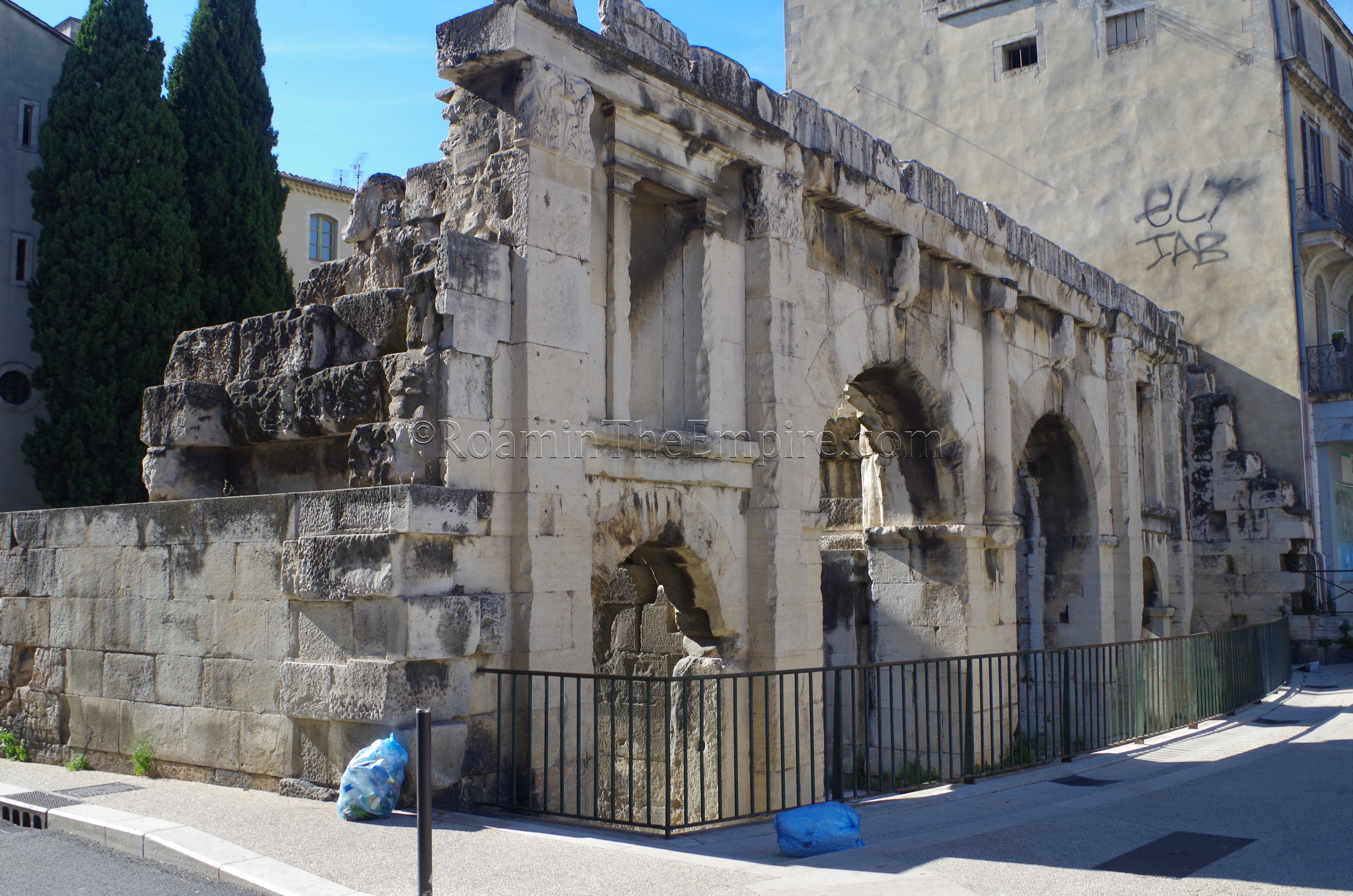
Port d’Auguste
The final stop in Nîmes is to the east, just opposite the impressive Église Saint-Baudile de Nîmes. Located here is the Port d’Auguste, another of the Augustan era gates in the city walls. This gate is much more completely preserved than the Porte de France, as both pedestrian entrances and both cart entrances remain. An interior courtyard (with a copy of the Augustus Prima Porta) is also visible. Using the same method as with the Maison Carrée, the inscription on the façade was recreated by estimating the letters used based on the mounting holes remaining. The reconstructed inscription puts the dedication of this gate and the adjacent city walls at 16 BCE, at the behest of Augustus. There is no entrance, the Port d’Auguste is fenced off and visible from the street. Oddly, unlike other monuments in town, there is no informational sign either.
The remains of Nemausus are essentially able to be visited in a single day; the whole of this itinerary took me about 8 hours; and that was including some time I spent trying to track down things that didn’t end up being visible. The trek up to the Tour Magne is a not insignificant climb up a hill, so that should be taken into account as well.
Sources:
Bromwich, James. The Roman Remains of Southern France: A Guidebook. London: Routledge, 1996.
Grant, Michael. A Guide to the Ancient World: A Dictioniary of Classical Place Names. New York: Barnes & Noble Books, 1997.
King, Anthony. Roman Gaul and Germany. University of California Press, 1990.
Stillwell, Richard, William L. MacDonald, and Marian Holland. McAllister. The Princeton Encyclopedia of Classical Sites. Princeton, NJ: Princeton U Press, 1976.


